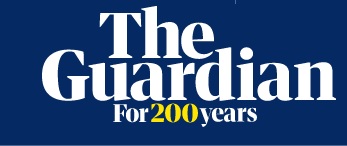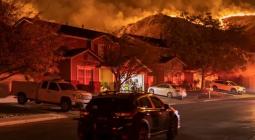Why insurance premiums are squeezing Australians and fuelling inflation
Insurance premiums are rising faster than inflation, squeezing homeowners, drivers and private health customers, as the rising cost of extreme weather events threatens to leave Australians exposed.
The sector, largely overlooked as a driver of inflation and cause of cost-of-living pressures, was the standout contributor to last week’s inflation data, representing annual price increases not seen in more than two decades.
Insurers have been advising customers of double-digit premium price increases for most products, including home cover and car insurance, representing a new super cycle of hikes.
The industry has defended the decisions, arguing that extreme weather and high costs of labour, building replacement, car parts and repairs mean above-inflation increases are necessary.
Climate crisis effects are weighing heavily on prices charged by reinsurers, which take on some of the risk of natural disasters, ultimately passed to policyholders.
Prof Paula Jarzabkowski from the University of Queensland said the increased frequency of extreme weather events was driving prices higher.
“You usually get a spike in premiums for a year or two after a disaster and then it all settles back down again,” said Jarzabkowski, who specialises in addressing insurance protection gaps. “What we’re seeing now is a fundamental change in the way the insurance market works.
“You’re going to find that some people simply can’t afford insurance and so they will drop out of the market. We’ve built in places we probably shouldn’t have built in and, after climate change, they’re definitely not robust.”
While weather disasters are fuelling insurance premium hikes, brokers also note that the steep increases have put insurers in a strong position to profit in the years ahead, a scenario that resembles what occurred in the aftermath of the 2010-11 Queensland floods.
The sharemarket performance of insurance stocks is mixed, as old claims weigh on the performance of some of the country’s biggest insurers, while others are trading near record highs.
The sector’s future profitability will depend on whether they face ongoing elevated claims or if they enjoy a period of relative peace.
Insurance prices are up 16.2% over 12 months, according to the inflation reading, representing the highest annual rate since 2001.
This compares with a 4.1% annual inflation rate, which policymakers are trying to push back down to the 2% to 3% band.
A spokesperson from the Insurance Council of Australia said that since the devastating bushfires of 2019-20, insurers have paid out $16bn in claims from 13 declared insurance catastrophes or significant events, which are still affecting premiums.
“Wherever you live in Australia, whether you’re directly exposed to extreme weather impacts or not, premium prices are rising because of the escalating costs of natural disasters, the growing value of our assets making them more costly to replace, inflation driving up building and vehicle repair costs, and the increasing cost of capital for insurers,” the spokesperson said.
Insurance costs contribute more than 5% to inflation calculations, according to the Australian Bureau of Statistics, behind housing and food but ahead of education and clothing expenses.
Kate Booth from the University of Tasmania said there needed to be more awareness of how rising premiums were adding to cost-of-living pressures.
“Companies that produce food, their insurance risk profiles are changing, so they’re potentially paying extra for their insurance and then that has a flow-on effect to consumers,” Booth said, referring to the impact of climate change on premiums.
“It’s not just housing contents insurance. That’s the most obvious thing that we can really see and get a tangible grasp of, but potentially all kinds of insurance are increasing in price – health insurance, pet insurance, funeral insurance, life insurance.”
Gary Hunter, the insurance and innovations editor at the comparisons site Finder, said premium increases were unevenly distributed, especially when it came to homeowners.
“Home insurance premiums have increased by approximately 22% in the last 12 months,” Hunter said.
“There will be certain places where it has gone up considerably more. With home insurance, it really depends on where you live; you and I could live on the same street, but if you’re in a house with a slope, you’ll be paying considerably more.”
Health costs are also tracking above inflation, according to ABS data, at the same time as the value many consumers receive from the private health insurance diminishes, according to a report by the Australian Medical Association.
The industry group Private Healthcare Australia has rejected claims of declining value and said health funds had been paying more on average for hospital treatment per policyholder compared with past years.
Australia’s largest private health insurer, Medibank, increased its profit margins throughout the pandemic, rising from 7.2% in 2019-20 to 9.1% last financial year, and its shares are trading near record highs.
Medibank credited productivity improvements and cost savings for its expanded margins.
“This cost discipline is a good thing for customers and their premiums,” said Medibank’s chief customer officer, Milosh Milisavljevic.
“We are really focused on making sure our customers can get great value with us – and we know value starts with their premiums, which is why we’ve been working hard keep to them as low as possible, despite costs rising significantly in the health sector.”
Cover photo: Insurance increases are in the double digits and while costs have been rising, some insurers are increasing their margins




